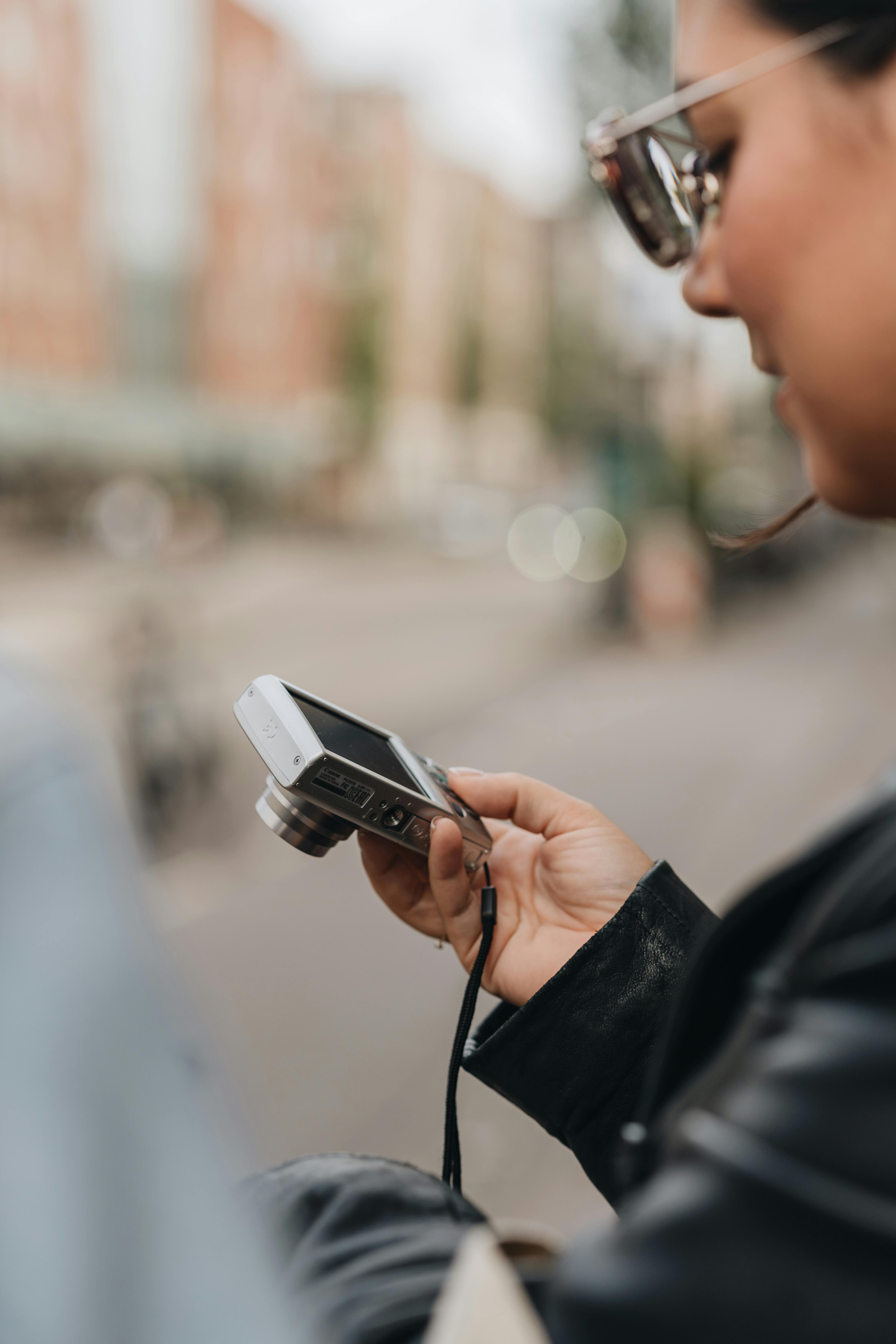Picture this: You’re sitting down, trying to enjoy a peaceful evening, when suddenly your attention is consumed by that one app on your iPhone that you just can’t seem to resist. You know the one – the time-sucking, productivity-killing app that keeps you from being present. But fear not, for we have a solution for you. In this article, we will reveal the secret to blocking a specific app on your beloved iPhone, allowing you to reclaim your time and regain control over your digital life. Stay tuned, because freedom from app addiction is just a few clicks away.

This image is property of images.pexels.com.
Overview of app blocking on iPhone
In today’s digital age, it is important to have control over the apps we use on our iPhones. Whether it’s to limit our own screen time or to restrict certain apps for our children, app blocking is a useful feature that can help us maintain a healthy balance with our smartphone usage. There are several options available on the iPhone to block specific apps, each with its own set of features and functionalities. In this article, we will explore the various methods of app blocking and provide step-by-step instructions on how to use them effectively.
Understanding the need for app blocking
App blocking on iPhone has become increasingly important as our dependency on smartphones continues to grow. We often find ourselves spending more time than intended on certain apps, affecting our productivity and overall well-being. Additionally, parents may wish to restrict certain apps on their children’s devices to ensure they are using them responsibly and safely. App blocking allows us to regain control over our app usage and establish healthy habits in our digital lives.
Exploring available app blocking options on iPhone
The iPhone offers a range of app blocking options to cater to different needs and preferences. These options include the Screen Time feature, Restrictions through Settings, Parental Controls, Guided Access, third-party app blockers, VPN-based app blocking, disabling notifications and app alerts, and restricting app installations. Each method provides a unique approach to app blocking, giving users the flexibility to choose the method that best suits their requirements. Let’s delve into each of these options in detail.

This image is property of images.pexels.com.
Using Screen Time feature
Screen Time is a built-in feature on iOS devices that allows us to monitor and manage our screen time usage. To enable Screen Time on our iPhone, we can go to the Settings app, tap on “Screen Time,” and then tap on “Turn On Screen Time.” Once enabled, we can access the app blocking settings by selecting “App Limits.” Here, we can choose the specific app we want to block by tapping on “Add Limit” and selecting the app from the list. We can then set limitations and restrictions, such as a daily time limit or a scheduled downtime, to prevent excessive usage of the app. The blocked app will be disabled during the specified time period, helping us control our app usage effectively.
Restrictions through Settings
Another method to block specific apps on our iPhone is through the Restrictions feature in the iPhone Settings. To access this feature, we can go to the Settings app and tap on “Screen Time” or “General” followed by “Restrictions.” After entering our passcode, we can enable Restrictions by toggling the option to “On.” We can then scroll down to find the “Allowed Apps” section and deselect the specific app we want to block. This method allows for more customizable restrictions, including disabling in-app purchases, Safari, or even the ability to install or delete apps. By restricting access to certain apps, we can ensure a more controlled and focused digital experience.
Using Parental Controls
Parental Controls are specifically designed for parents who want to regulate app usage on their children’s iPhones. To set up parental controls, we can go to the Settings app, tap on “Screen Time,” and then select “Content & Privacy Restrictions.” Here, we can enable the restrictions and enter a passcode to protect the settings. Within the parental control settings, we can find the option to block specific apps by tapping on “Allowed Apps” and unchecking the app we wish to block. By selecting the desired apps to block, we can ensure that our children are using their iPhones responsibly and safely.

This image is property of images.pexels.com.
Blocking apps with Guided Access
Guided Access is a feature on the iPhone that helps us stay focused on a specific app by limiting our access to other features and functions of the device. To enable Guided Access, we can go to the Settings app, tap on “Accessibility,” and then select “Guided Access.” Here, we can toggle the feature to “On” and set up a passcode to restrict unauthorized access. Once activated, we can launch the app we want to block and triple-click the Home or Side button to enter Guided Access mode. By drawing on the screen or selecting specific areas, we can temporarily block certain features or buttons within the app, effectively preventing distractions and maintaining our focus.
Utilizing third-party app blockers
In addition to the built-in features on the iPhone, there are also third-party app blockers available on the App Store. These apps offer advanced blocking and monitoring features, allowing us to have more control over our app usage. To explore and select a reliable third-party app blocker, we can search for “app blockers” on the App Store and read reviews and descriptions to determine the best fit for our needs. After installing and setting up the chosen app blocker, we can configure the app blocking settings based on our preferences. These settings may include blocking specific apps, setting daily time limits, or even monitoring app usage in real-time. The third-party app blocker enhances our ability to manage and regulate our app usage effectively.
Using VPN to block specific apps
Virtual Private Network (VPN) based app blocking is another method to restrict access to specific apps on our iPhone. VPNs allow us to route our internet traffic through a secure and private network, which can also be utilized to block certain apps. To find a suitable VPN app, we can search for “VPN” on the App Store and select an app that offers the necessary blocking features. After installing and configuring the VPN app, we can navigate to the settings within the app and specify the apps we want to block. The VPN will then intercept the network traffic for those apps, effectively preventing them from functioning. This method provides an additional layer of app blocking, especially for apps that may bypass the built-in blocking options.
Disabling notifications and app alerts
To minimize distractions from specific apps, we can disable notifications and app alerts on our iPhone. By accessing the Notification settings, we can customize the notification preferences for each app, including disabling them altogether. To access the Notification settings, we can go to the Settings app, tap on “Notifications,” and select the specific app. Here, we can toggle off “Allow Notifications” to disable all notifications from the app. Alternatively, we can customize the alert style, sounds, or badges to minimize the impact of notifications while still staying informed. By disabling notifications and app alerts, we can create a more focused and uninterrupted digital experience.
Restricting app installations
To prevent the installation of specific apps on our iPhone, we can utilize the App Store restrictions feature. By accessing the iPhone settings for app installations, we can enable App Store restrictions and restrict the ability to download or install apps. To enable App Store restrictions, we can go to the Settings app, tap on “Screen Time,” select “Content & Privacy Restrictions,” and enter the passcode. Here, we can toggle on the “iTunes & App Store Purchases” option and set restrictions by selecting “Installing Apps” and choosing “Don’t Allow.” By managing the restrictions for specific apps, we can maintain control over the content and apps on our iPhone.
Additional security measures
In addition to app blocking, there are several other security measures we can implement to ensure a safe and protected iPhone experience. Regularly updating the iOS software on our iPhone is crucial to staying up-to-date with the latest security patches and improvements. By checking for app updates on the App Store, we can ensure that our installed apps have the latest features and bug fixes, reducing the risk of potential vulnerabilities. Monitoring app usage through the Screen Time feature or third-party app trackers can provide insights into our app usage habits and help us make informed decisions about our digital well-being. Implementing passcodes or utilizing biometric features like Face ID adds an extra layer of security to our iPhone, protecting our personal information and sensitive data. Finally, enabling two-factor authentication on our Apple ID ensures that our account is secure, preventing unauthorized access and protecting our privacy and data.
Considerations for privacy and data protection
While app blocking and security measures are essential for maintaining a healthy digital lifestyle, it is also important to consider privacy and data protection. When using third-party app blockers or VPNs, it’s crucial to select reputable and trusted providers to ensure that our personal information and online activities are not compromised. Reading privacy policies and understanding what data is collected by these apps or services can help us make informed choices about our privacy. Regularly reviewing app permissions and the data access granted to each app can also provide insight into the information we share and help us maintain control over our personal data. By taking these considerations into account, we can strike a balance between app blocking and privacy protection, ensuring a secure and responsible digital experience.
In conclusion, app blocking on the iPhone is a valuable feature that allows us to regain control over our smartphone usage, limit distractions, and promote a healthier digital lifestyle. With options such as Screen Time, Restrictions, Parental Controls, Guided Access, third-party app blockers, VPN-based blocking, disabling notifications, and app restrictions, we have a multitude of tools at our disposal to manage and regulate our app usage effectively. By implementing additional security measures and considering privacy and data protection, we can ensure a safe and secure digital experience on our iPhones. So, let’s take advantage of these app blocking options and strive for a more balanced and mindful relationship with our smartphones.

